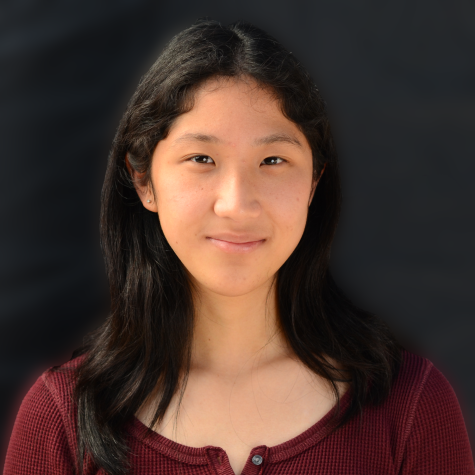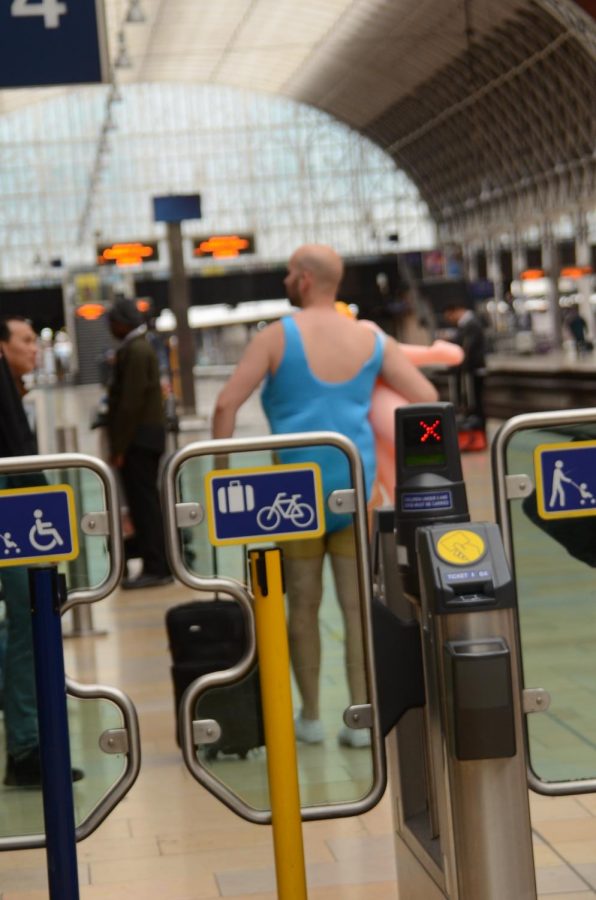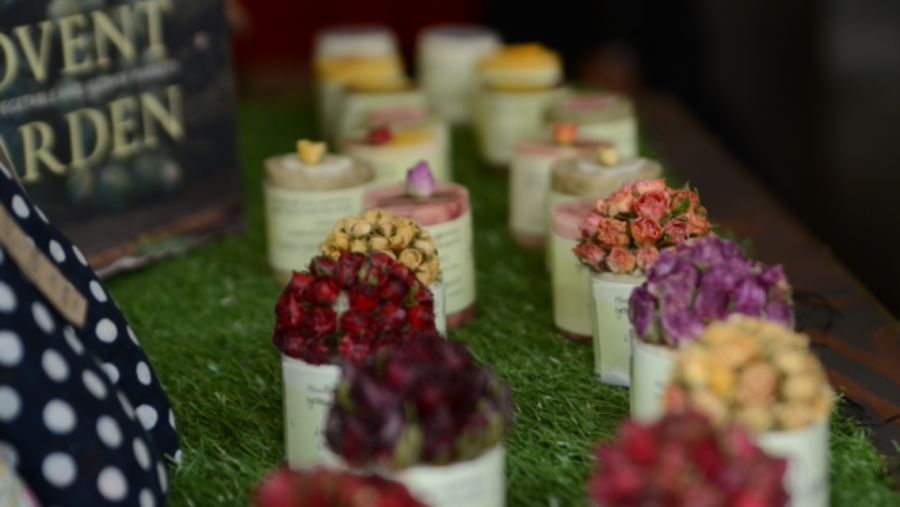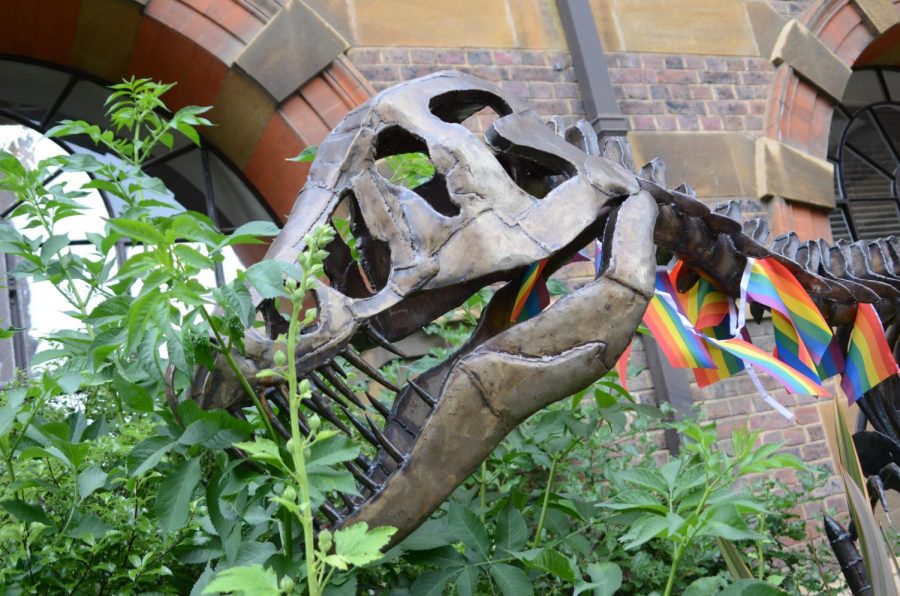Moments of London: A walk through my memories
Paddington Station
After an unknown descent into the London Underground, I am met with streams of tourists converging like the river delta gathers at its mouth, all flowing out to unknown routes. I lug my suitcase through an unfamiliar labyrinth of staircases and finally stumble onto a train towards Paddington Station. Towering white arches tunneling into the distance frame the station, and ornate black borders flare out like wings across the ends. The sunlight glares in through the center of a glass ceiling otherwise shaded by maroon rectangles, and the building echoes with the roar of trains and bustle of visitors. Not quite sure where I fit in among this commotion, I resign myself to standing in a small 5 square foot circle in the middle of a paved platform in a huddle of suitcases. My first glimpse of the city is a busker strumming his double bass at the Underground exit to Bayswater by way of the Circle Line, and I realize that after 20 hours of travel, this is finally London.
London College of Communications
Two blocks across from the Bakerloo stop at Elephant and Castle stands a building composed of rectangular frames with an entrance simply marked by the silver words: “ual: the university of the arts london.” Despite its unassuming brick exterior, the interior is filled with flashing posters, the clatter of students designing architecture and the whitewashed scent of an art studio. The stairs leading up to “Act Two” rather the second floor justifies its artistic prowess. Soon after seating ourselves in a drastically air conditioned classroom, our instructor, Max Houghton, warmly greets the class. Her welcoming nature and insistence that we call her “Max” quickly draws me in, as does the brilliance of her lecture. I find myself discovering the creative aspect of photography apart from honing technical skills. Aside from capturing a moment, each frame has the potential to encompass emotion and therefore hold the photographer responsible for the morality of a photo. One example of this was during freelance photographer Anders Birger’s presentation on documentary photography. While reporting during the Sichuan earthquake, he noticed a father and daughter walking among the collapsed buildings, with the latter holding a large framed image of a woman, who could have been a deceased family member due to the devastation caused by the natural disaster. This raised the question of whether it was morally responsible to take a poignant photo at the cost of another person’s tragedy. These theories spun around inside my head as we headed out on assignments during the following days and only expanded when Max described the tradition of strolling through a city. The specific term for such a character is the “flaneur,” the quintessential chronicler of modern life. Looking back at the work I had done over the past few days, we are all flaneurs, documentarians of the city, countryside or any other topic, when we clicked the shutter. My thoughts culminated at the end of the course, when a group of five MA students presented their projects on documentary photography using media apart from simply photos. Despite only lasting for three days, this course expanded my borders in viewing photography as a tool to negotiate various landscapes.
Covent Garden
The faint music of Lady Gaga and Bradley Cooper’s “Shallow” floats through a wide courtyard bordered on one side by vendors selling soaps, flowers and chocolate. Each stand is laced with floral chains, and the scent of roses whirl around among the sounds of laughter and chatter. After a quick scan of the upper floor, we make our way down to a charming pavilion where a waiter belts out Italian verses that resonate around the stony walls. However, we did face the dilemma of finding a place for lunch given all the options. The first attempt unfortunately resulted in walking into a bar and later panicking when the bartender asked for our identification. Speed walking back out the doorway, we dropped our bags at Chez Antoinette, a small French cafe tucked into the side of a tunnel. We then proceeded towards Venchi and picked up swirling flavors of gelato packed into a long, thin cone. As we strolled along the alleyways with our melting treats in hand, it almost felt like the opening scene of a movie with the freedom of adventure and the privilege of relaxation.
Cambridge University
The train rumbles along the Great Northern Line from Platform 0 of King’s Cross to the Cambridge station nestled among discarded buildings sprayed with graffiti and slows to a stop. Gelato shops, Asian fast food and an array of assorted businesses line the sidewalks of the 1.7 mile walk towards Cambridge University, the indisputable center of the college town. Throughout the tour of the prestigious and seemingly infallible university, the layers of its sterling reputation are gradually peeled back. The sword in King Henry VIII’s hand is a chair leg; Charles Darwin swallowed a beetle; rowdy students scaled the King’s College Chapel and hung Santa hats on each of the four terraces. After a tour of a few of the 31 total colleges, we wander around the marketplace and make our way around the complex of biology buildings, where a string of rectangular rainbow flags entangle a dinosaur skeleton. A few blocks down, the Fitzwilliam Museum filled with antiquities sprawl out behind bikers speeding down the road. The artifacts wrap around centuries, starting from the lid of a sarcophagus waiting to the right of the staircase. Greek and Roman statues follow, and those war helmets and marble busts contrast with the delicate European porcelain depicting figures from Hercules to shepherds to roosters perched indignantly behind the glistening glass cases. Soft daylight seeps past the window panes, flooding the entire gallery with a gentle aura and framing the displays with a bright rim. The streets outside are also littered with multiple eccentricities, most notably a man decked in Ray Ban sunglasses and strumming a guitar. However, the setting distinguishes him from all the others–the performer squats inside a cylindrical can labeled “litter,” with two holes for the face and arms.

Nicole Tian (12) is the co-editor-in-chief of Harker Aquila. This is her fourth year on staff, and she previously served as the opinion editor, co-lifestyle...
Anna Vazhaeparambil (12) is the co-editor-in-chief of Harker Aquila. This is her fourth year on staff, and she hopes to grow as a reporter and photographer....


















![“[Building nerf blasters] became this outlet of creativity for me that hasn't been matched by anything else. The process [of] making a build complete to your desire is such a painstakingly difficult process, but I've had to learn from [the skills needed from] soldering to proper painting. There's so many different options for everything, if you think about it, it exists. The best part is [that] if it doesn't exist, you can build it yourself," Ishaan Parate said.](https://harkeraquila.com/wp-content/uploads/2022/08/DSC_8149-900x604.jpg)




![“When I came into high school, I was ready to be a follower. But DECA was a game changer for me. It helped me overcome my fear of public speaking, and it's played such a major role in who I've become today. To be able to successfully lead a chapter of 150 students, an officer team and be one of the upperclassmen I once really admired is something I'm [really] proud of,” Anvitha Tummala ('21) said.](https://harkeraquila.com/wp-content/uploads/2021/07/Screen-Shot-2021-07-25-at-9.50.05-AM-900x594.png)







![“I think getting up in the morning and having a sense of purpose [is exciting]. I think without a certain amount of drive, life is kind of obsolete and mundane, and I think having that every single day is what makes each day unique and kind of makes life exciting,” Neymika Jain (12) said.](https://harkeraquila.com/wp-content/uploads/2017/06/Screen-Shot-2017-06-03-at-4.54.16-PM.png)








![“My slogan is ‘slow feet, don’t eat, and I’m hungry.’ You need to run fast to get where you are–you aren't going to get those championships if you aren't fast,” Angel Cervantes (12) said. “I want to do well in school on my tests and in track and win championships for my team. I live by that, [and] I can do that anywhere: in the classroom or on the field.”](https://harkeraquila.com/wp-content/uploads/2018/06/DSC5146-900x601.jpg)
![“[Volleyball has] taught me how to fall correctly, and another thing it taught is that you don’t have to be the best at something to be good at it. If you just hit the ball in a smart way, then it still scores points and you’re good at it. You could be a background player and still make a much bigger impact on the team than you would think,” Anya Gert (’20) said.](https://harkeraquila.com/wp-content/uploads/2020/06/AnnaGert_JinTuan_HoHPhotoEdited-600x900.jpeg)

![“I'm not nearly there yet, but [my confidence has] definitely been getting better since I was pretty shy and timid coming into Harker my freshman year. I know that there's a lot of people that are really confident in what they do, and I really admire them. Everyone's so driven and that has really pushed me to kind of try to find my own place in high school and be more confident,” Alyssa Huang (’20) said.](https://harkeraquila.com/wp-content/uploads/2020/06/AlyssaHuang_EmilyChen_HoHPhoto-900x749.jpeg)






